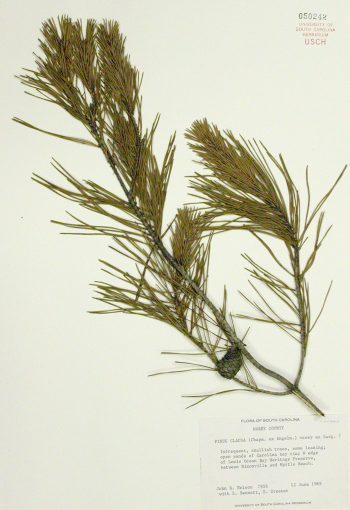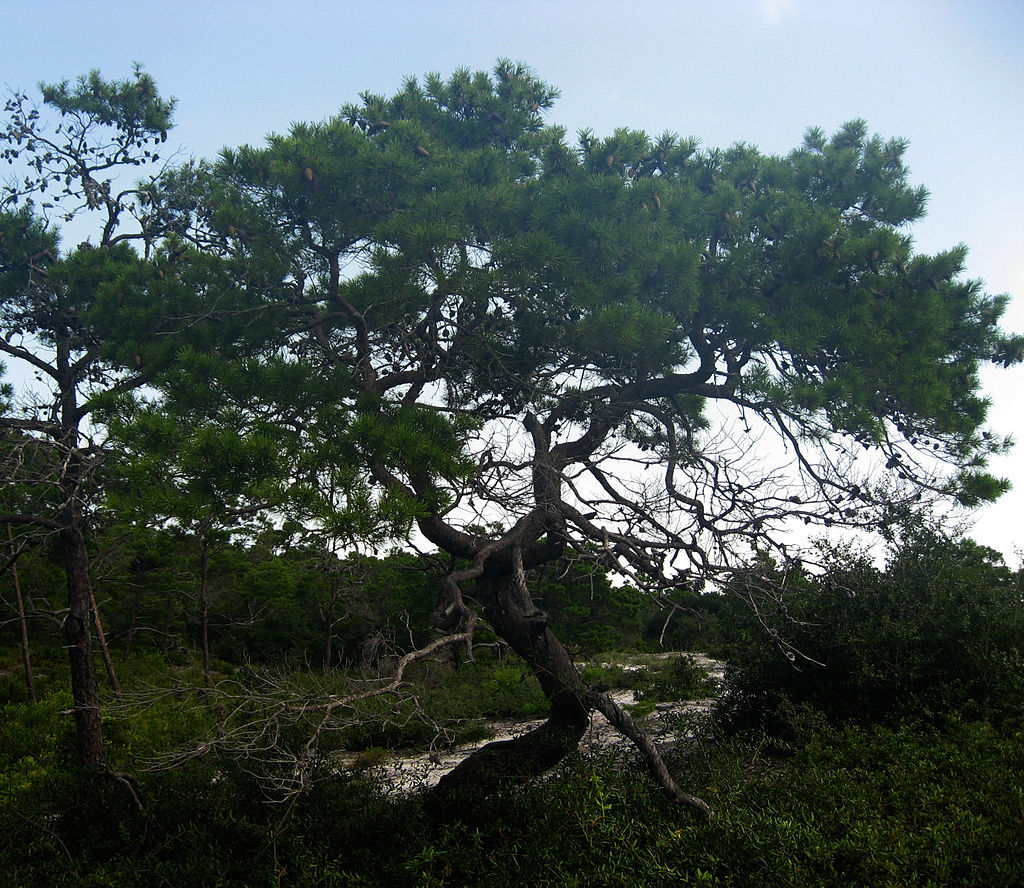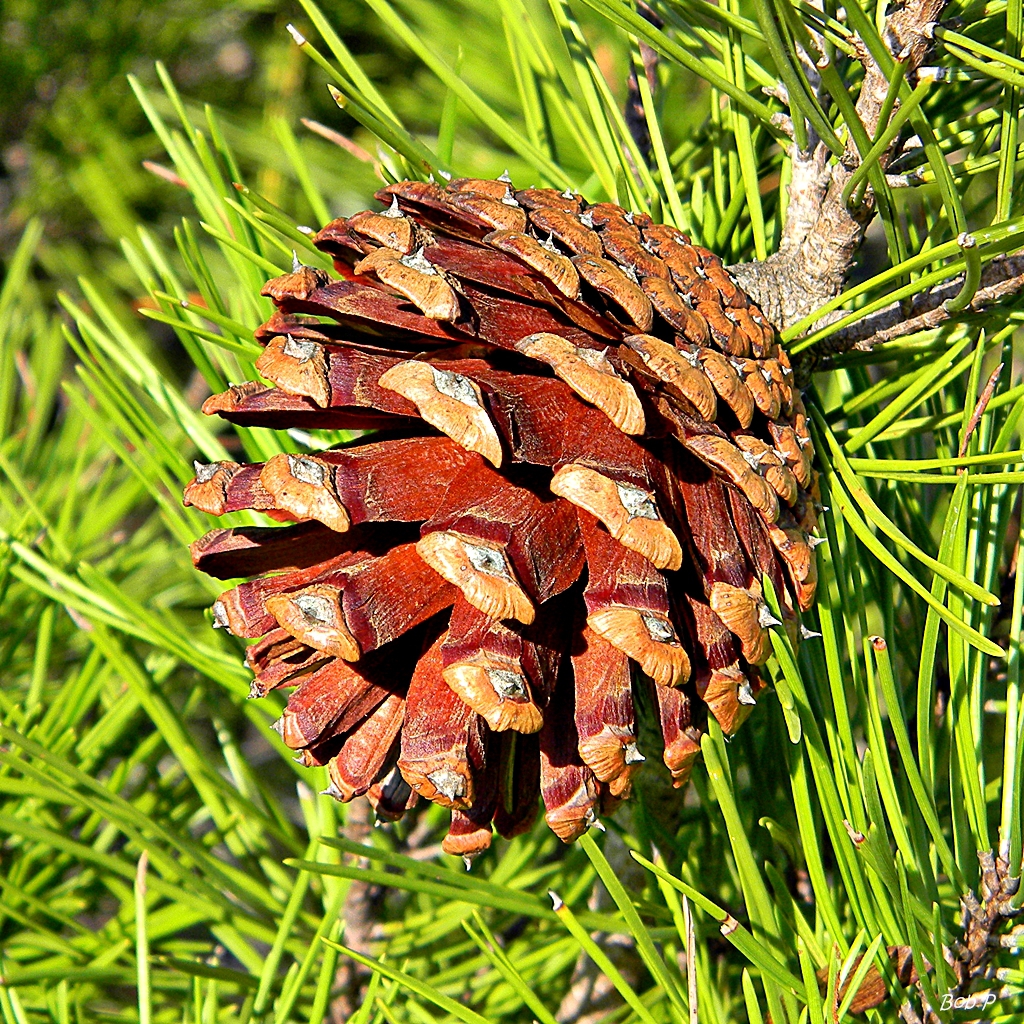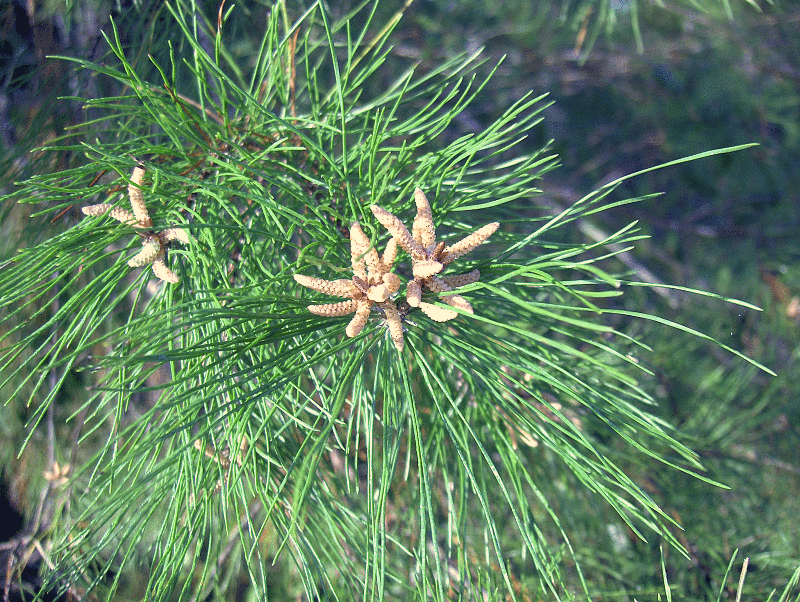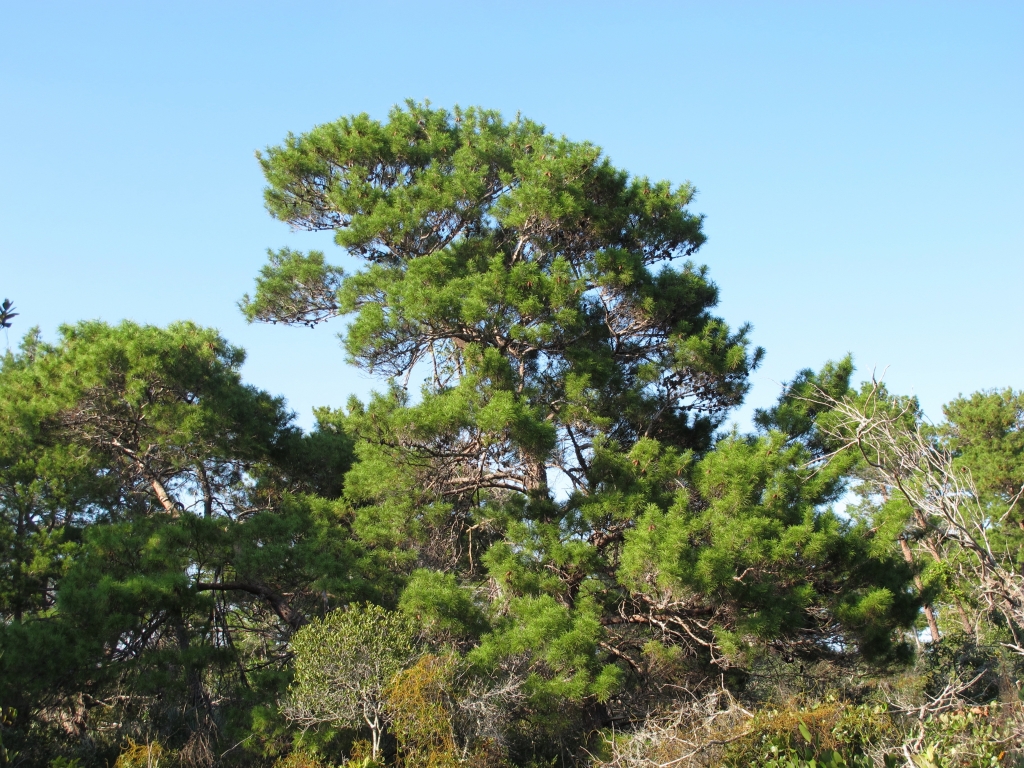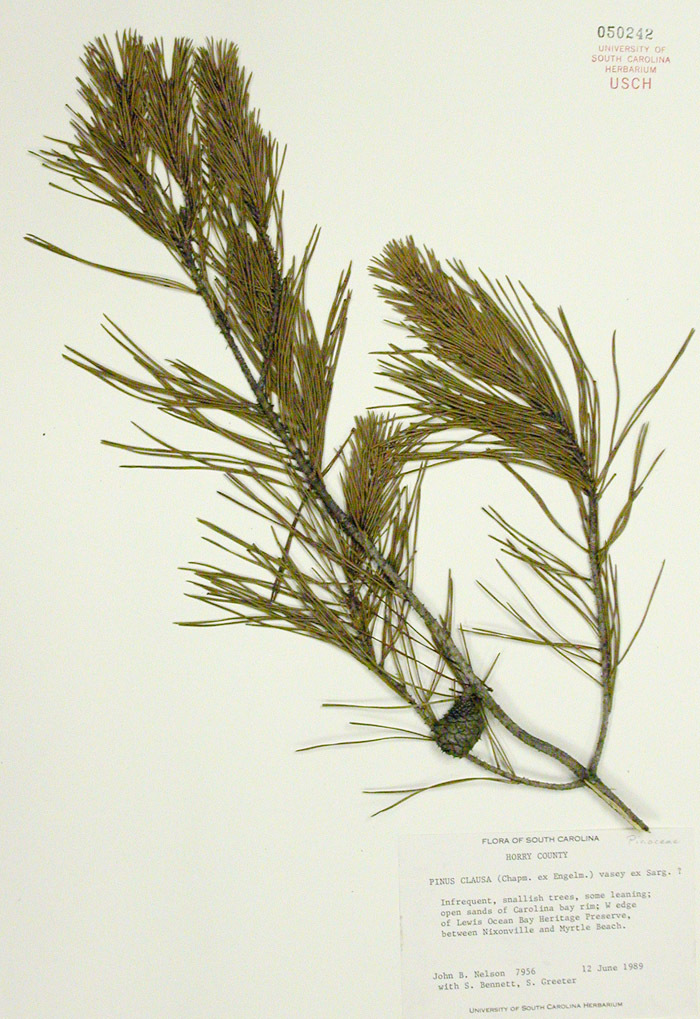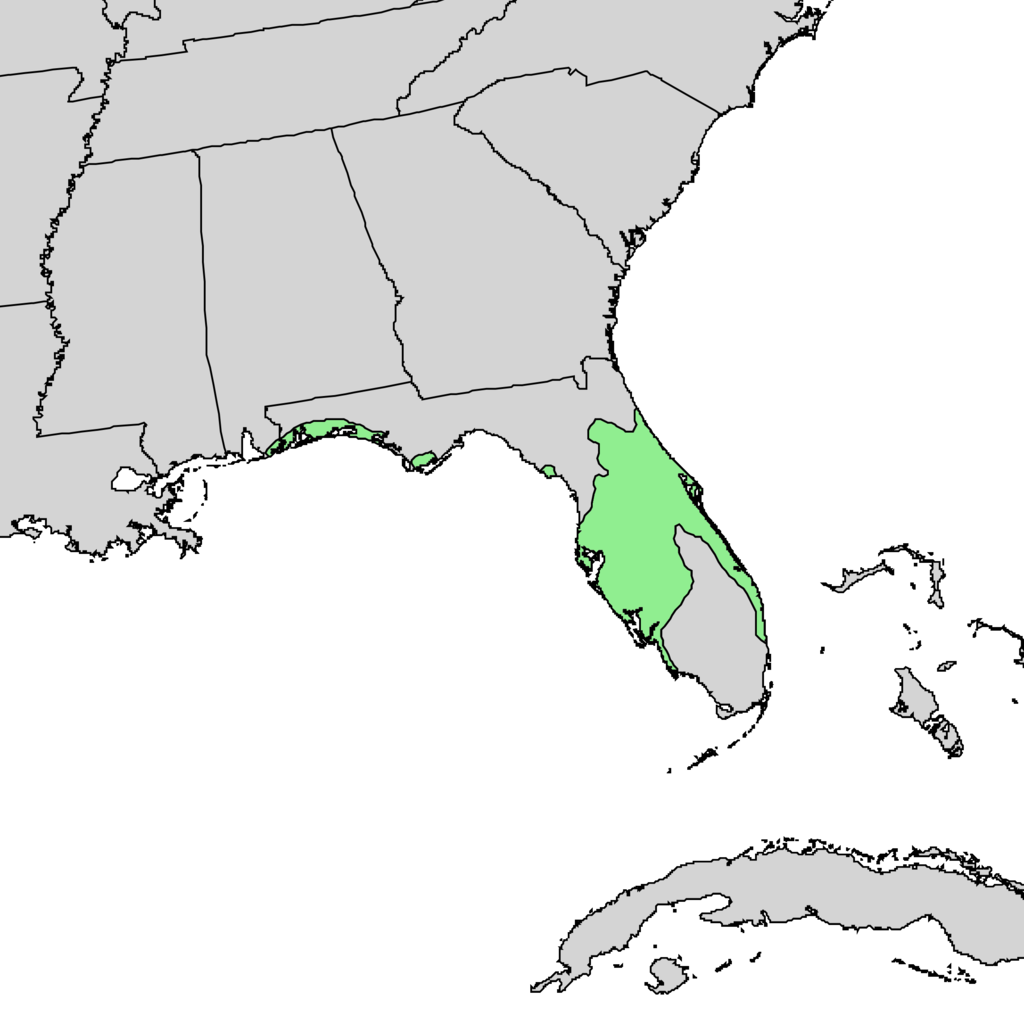subgenus Pinus, section Trifoliae (Duhamel), subsection Contortae (Little et Critchfield).
Pinus clausa, as described in 1884 by (Alvan Wentworth Chapman (1809-1899) ex Georg Engelmann (1809-1884)) George Vasey (1822-1893) ex Charles Sprague Sargent (1841-1927) is commonly known as sand pine, spruce pine, or scrub pine. Some botanists carry this species as a variety of Pinus virginiana, i.e. P. virginiana var. clausa. The species name translates from the Latin term for "closed," referred to serotinous seed cones that remain closed until exposed to fire.
Ethnobotany. In peninsular Florida, P. clausa is managed to produce a high volume of pulpwood. It has low timber value due to numerous persistent dead limbs and often crooked trunks.
Description. Sand pine is an evergreen coniferous species of tree that grows to mature heights of 65 feet (21 m) with a straight and erect to leaning and crooked trunk up to 20 inches (50 cm) in diameter, measured at breast height. Trees grow with dense branching with a mostly rounded or irregular crown.
- Bark is colored gray to gray-brown, growing furrowed, with narrow, flat, irregular ridges. On upper sections of the trunk, bark is reddish to red-brown, platy becoming smooth distally. Pockets of resin are absent.
- Branches grow spreading to ascending and are poorly self-pruning. Twigs are smooth, slender, violet- to red-brown in color, rarely glaucous, aging gray.
- Foliar buds are cylindric-shaped, colored purple-brown, measuring up to 0.4 inch (1 cm) with white-fringed scale margins.
- Leaves (needles) are borne 2 per fascicle, growing spreading and ascending, persisting 2 to 3 years on the tree. Needles measure 2.4 to 4 inches (6 - 10) cm long and circa 0.04 inch (1 mm) wide. and grow straight to slightly twisted, colored dark green. All surfaces have fine, inconspicuous stomatal lines, finely serrulate margins, short-conic apices. Needle sheaths measure 0.12 to 0.2 inch (3 - 5 mm) with a persistent base.
- Pollen cones are ellipsoid shaped, circa 0.4 inch (10 mm) long and brownish yellow in color.
- Seed cones maturing 2 years after pollination, shedding seeds soon thereafter or are often long-serotinous. They are borne in clusters of 4 and are long-persistent on the tree with whorled, spreading, symmetric (or rarely slightly asymmetric, reflexed) structure, lanceoloid shaped before opening, ovoid to broadly ovoid when open. Cones measure 1.2 to 3.2 inches (3 - 8 cm) long, red-brown in color, sessile or on (0.4 inch (1 cm) peduncles. Cones scales with have a dark red-brown, purple, or purple-gray border distally on adaxial surface. Apophyses are thickened, shallowly and angulately raised, transversely rhombic shaped, and cross-keeled. Umbo central on the scale, low-pyramidal, tapering to sharp tip or weak, often deciduous prickle.
- Seeds are obovoid-oblique shaped with a 0.16 inch (4 mm) body. They are dark brown to nearly black in color. Attached wings are up to 0.68 inch (17 mm) long.
The species resembles both P. banksiana and P. virginiana, and like the former includes both serotinous and non-serotinous races
Distribution. This species is native to USA - Alabama and Florida, growing at elevations of sea level to 200 feet (0 - 60 m). The largest sand pine concentration is a block of the variety clausa covering about 101,170 hectares in north-central Florida, an area often referred to as the "Big Scrub." This variety of sand pine also grows in a narrow strip along the east coast of Florida from St. Augustine southward to Fort Lauderdale, and along the Gulf Coast in small tracts scattered from a few miles north of Tampa, south to Naples. Sparse stands of sand pine are also found on many of Florida's offshore islands.
Hardy to USDA Zone 9 - cold hardiness limit between 20° and 30°F (-6.6° and -1.1°C).
